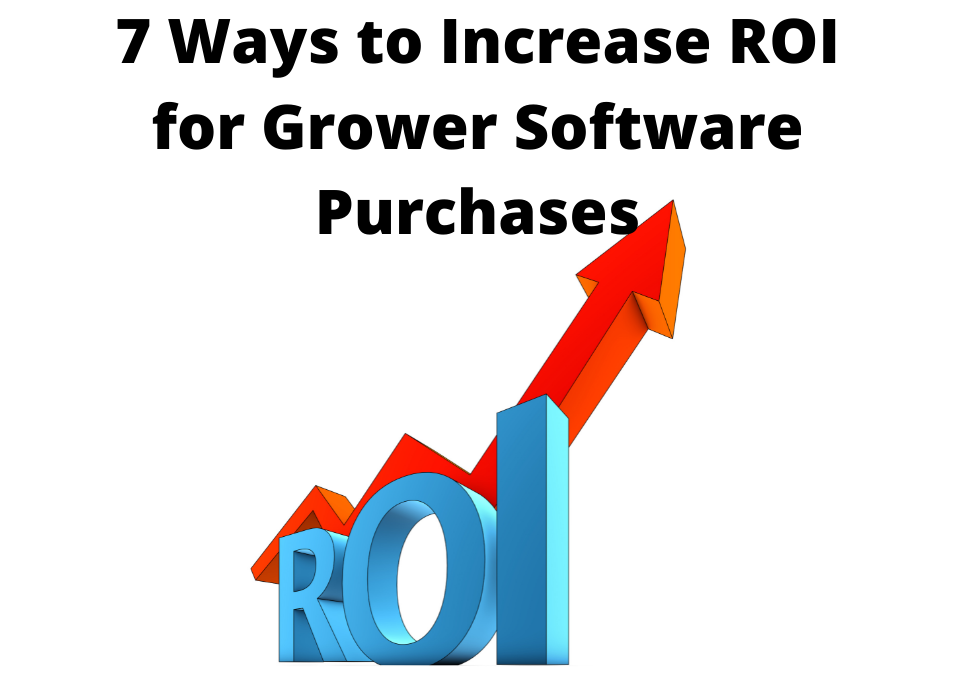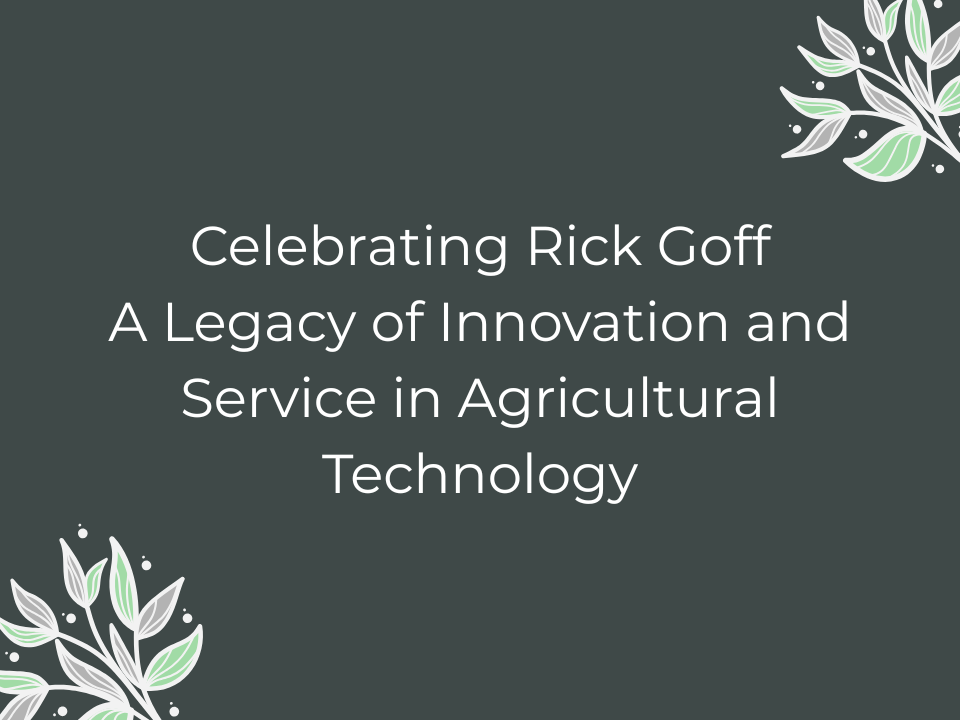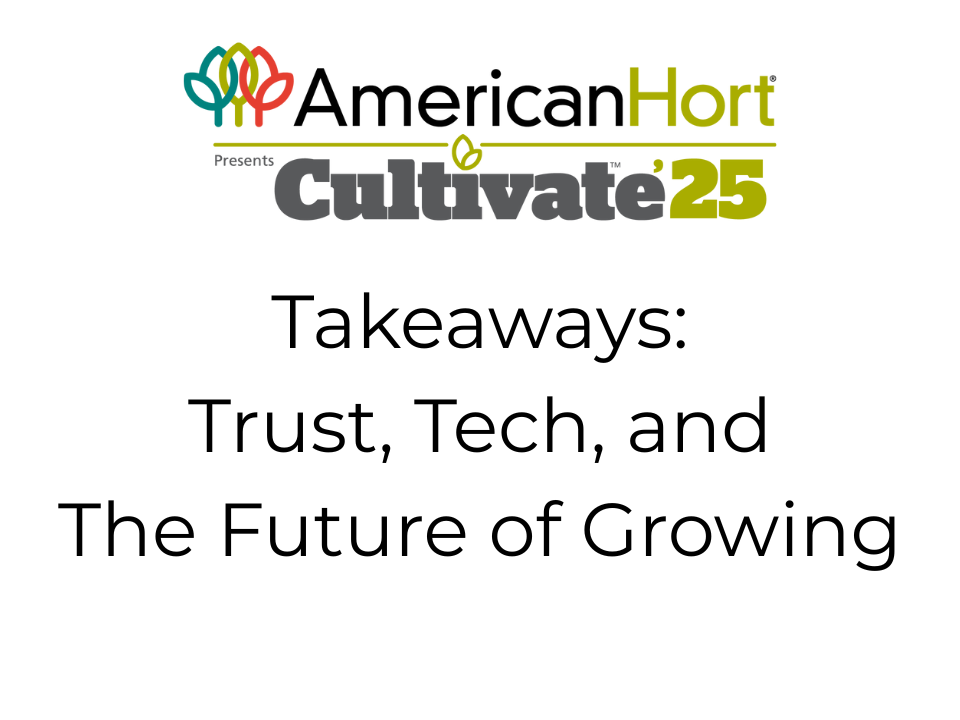
What We Have Learned After Building Almost a Million SageX3 Routing Records
December 13, 2021
Advances and Improvements in GrowPoint in 2021
December 30, 2021Buying a software system for your growing operation is a complex decision and must be made carefully. The results of the decision and the implementation thereof need to help create tangible results in your business that provide a return.
Here are a few ways to help improve the return on investment of your software purchases.
Know Your Expected Results
When you decide to purchase a new software system it is worth the time and effort to explicitly determine what the results are you want out of the system for your business.
Do you need improved automation, integrated accounting, reduced transaction overhead, improved data tracking, better employee training, mobile apps, better software support, better grower inventory tracking, more capacity? There are many more results that should be listed and understood. Make that list and discuss with potential vendors how their system will accomplish the results.
Too many times purchase decisions are made based on future state perceptions and not on actual reality. And, too many times, software salespeople use cloaked language which makes it hard to determine if what you need is already there and working now or something that would be customized and added later.
Define Process and Behaviors
Make sure that your work processes are documented (and understood) or known so that as you look at the features and capabilities of new systems you can understand how those processes will change.
Make your list of “How do I …” questions and work through that list with the vendor. Have them demonstrate (even on dummy data) what that looks like for some of your critical processes.
Make sure you understand what is already working and delivered vs coming later in terms of features that help you implement the processes you need.
Don’t Be Trapped By “our old system does it this way”
Many growers, who migrate off old, or no longer supported grower software or ERP systems have a lot of ingrained habits in terms of how things should by done by software.
We are all more comfortable with what we are familiar with but forcing new vendors to try to accommodate all those old ways may block other benefits and features available in a new system. And many growers build their operational processes around this old software. Be open to positive changes that new software can bring.
The adoption of a new system is a great time to re-think key processes to gain efficiency improvements and other benefits. Take time to understand how the new software system implements key features and processes needed by your operation. This understating can help get buy-in from employees in how their jobs will change with the new system.
Training and Retraining
Realize that much of the value of the system will come down to the knowledge and efficiency with which your employees can use the system to gain the results.
It is worth the investment to get the right high yield training to educate your employees. Make sure you have a ‘test’ system in order that the employees can get ‘reps’ in. Practice before GO-LIVE is essential.
Additionally, make sure that training is staged at appropriate intervals before and after GO-LIVE.
In our highly seasonal industry is it easy to forget all the steps of an online complicated process. Yearly or seasonal refresher training for staff is a best practice.
Data Visibility
News flash: most new software systems do not come with the reports a grower will need to run their business. Those will have to be built and added to the system for use.
It is crucial to define and implement the most important reports your operation needs prior to GO-LIVE. If you don’t have the most important reports and metrics, you will be flying blind.
Make a list of key reports, fields, and metrics that will be required for GO-LIVE and make sure those are part of the implementation plan.
Additionally, investigate running audit reports for outliers and bad data in your item setup, costing, pricing, and other crucial data areas. Simple mistakes can cause large variances when amplified across a whole production or sales plan.
Automation
The last thing you want is a brand-new system that doubles the amount of manual data manipulation just to do the basic operations.
Investigate upfront what levels of automation can be reliably used to reduce staff overhead and speed data results in new systems.
Some areas that we have helped growers automate their software operations in are:
- Work order generation from production plan
- Purchase order generation from production plan
- Data audits and corrections
- Raw Material views and inventory roll forwards
- Analytical reports
- Daily sales updates
- Cash flow forecasting
- Dashboard reports
- EDI (Electronic Data Interchange) interfacing with retailer trading partners
- Building on demand replenishment data sets
- Sales Order creation from replenishment worksheets
- Delivery notification for merchandising employees
- And more…
Good Software Support
Understand what support model is required and what is included with the software purchase. Most software vendors provide a basic level of customer support that will get questions answered in some period of defined time like a 24 hour response time for example with email. And some allow the purchase of premium support that gets you faster access when you need it.
Decide what level of support you need and make sure the boundaries are well known up front.
Conclusion
A software investment is an ongoing effort to learn, improve and react to changes in the industry, your business, and the environment. Make sure that you go through these 7 areas before purchase to improve the ROI on your system.
A little extra work upfront with your software vendor can help you understand how to better realize a good return on your software investment.
Contact us to find out how Advanced Grower Solutions software can help your operation.





